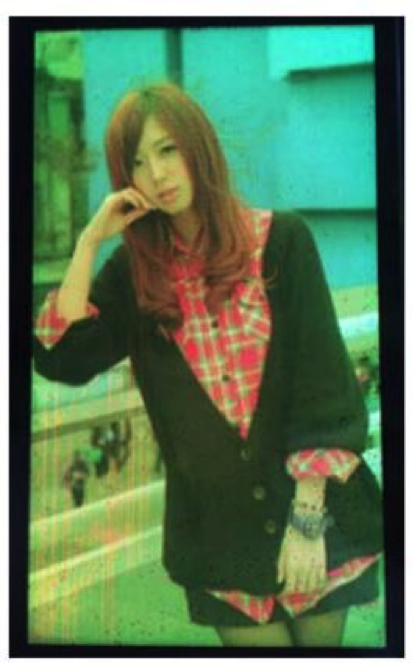Every year in March, the world’s experts in QDs convene for the Quantum Dots Forum to discuss recent advances, market conditions, and new implementations of QDs for displays and other applications. This year’s QD Forum featured talks from consultants, corporate scientists/CEOs, academics, display giants, and start-ups, all with their own unique role in QD materials development and commercialization. Every year a theme arises, and for the past few years it has been that QDs are finally here in a big way. This year however, the attitude shifted from “we made it!” to “what’s next?”. Now that QDs have penetrated the display market, the community is focused on extracting the greatest benefit from these tiny but powerful particles.
In this blog I’ll highlight some key takeaways from the conference about the future of QD technology in displays.
Quantum Dot Color Filters: QD color filter replacements (QDCFR) were a hot topic this year that was barely mentioned at last year’s conference. The advantages are great (efficiency, brightness, viewing angle, color, etc) but the challenges will not be easily overcome. One of the major challenges that QDCFRs would rely on is the development of an in-cell polarizer. QDs depolarize light, so they must be used after both polarizers in an LCD. There were mixed opinions on how difficult this might be to accomplish, but one alternative stood out as a possible workaround – use an OLED backlight instead! An OLED/QDCFR technology could take advantage of the benefits of OLED (black levels) while exploiting the efficiency and color of QDs. It remains to be seen if OLED/QDCFR is a viable product, as the cost is expected to be higher than both QLED and OLED displays.

Non-Cd ELQD (true QLED): Of course, the ultimate goal of QD display technology is an electroluminescent (EL)QD device (some call this a true QLED display). The promise of an electroemissive technology based on QDs has been the pipe-dream of QD and display scientists since it was first demonstrated over a decade ago. Nearly all developmental work has occurred on Cd-contained materials – but that’s changing. There is an increased focus on InP-based ELQD devices. TCL, Nanophotonica, and Fraunhofer all shared data on their progress related to InP ELQD. Not surprisingly, the lifetimes are very poor (as you can watch it degrade in real-time), but so were CdSe ELQD devices when they were first being developed. There is hope still for highly efficient ELQD displays (Cd will come first), but of all QD display technologies, this one is still the furthest away from finding its way to our living rooms.
Ink-Jet Printed QDs: Cost is clearly a concern for anyone creating QD components. IJP is one way to reduce cost and pattern QDs on the micro-scale. Based on talks from Kateeva, TCL, and Nanjing Tech, the ability to print QDs is well on its way to becoming a viable technology. Kateeva demonstrated that QDCF wells could be filled with QDs using their INP platform, while Nanjing Tech and TCL spoke about their full-color all-IJP ELQD displays.

Perovskite QDs: The battle between CdSe and InP QDs is now seeing competition from a third QD type – perovskites. This new material set contains some very attractive properties for displays (narrow emission & high blue absorbance) but have not yet seen commercial success due to two main factors – they are unstable in operating environment, and they contain lead. Stability improvements are expected to continue in the coming years, and some people are working on Pb-free perovskites, but that is a long way off. For now, if display companies want to use perovskites they will be stuck with the difficult choice of whether or not they can tolerate lead in their display. The level of lead in a perovskite QD film is predicted to be less than the RoHS limit (1000 ppm) which means it would not require an exemption like the current CdSe QD technology. Companies Avantama and Quantum Solutions were on hand to discuss their progress in this area and make the case for Perovskite QDs.
MicroLEDs: No topic has been hotter this year than microLEDs (even if the Samsung Wall isn’t really a micro LED display). This year we heard from two companies in the microLED space, X-celeprint and Lumiode. While neither company focuses on QD development for microLEDs, the audience was clearly interested in how QDs could play a role in what some believe is the future of displays. To achieve full-color, there are two general approaches: 1. make three colored microLEDs, 2. Make blue microLEDs and use down-converters to make the R + G subpixels. MicroLEDs cannot use phosphors to down-convert blue light to red + green due to the relative size of phosphor particles which are larger than an individual microLED. Here is where QDs have a distinct advantage. Their small size and efficient down conversion makes them attractive for the microLED space, but questions still remain. Will QDs be able to absorb enough light to achieve full color conversion? How will QDs be deposited (ink-jet or lithography)? Will QDs survive the conditions of on-microLED without further encapsulation? Suffice to say, there is interest on both sides but not clarity on whether or not this will actually pan out for the QD folks.
Conclusion:
I look forward to joining this event again next March to learn and discuss how far QDs have come in 2018, and to find out “what’s next?” in 2019. – Peter Palomaki
Thank as always for reading! This piece originally appeared on Display Daily.